Boiler Inspection
The boiler inspection article provides you with information about inspection of boilers and boiler testing in manufacturing shop, as well as boiler in-service inspection in operating units. You may review water tube boiler and fire tube boiler inspection procedures.
How Does a Steam Boiler work?
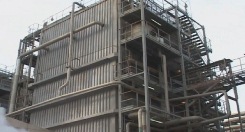
The I4I Academy API Source Inspector Course covers boiler inspection. The ASME Section IX training course covers topics related to welding procedure qualifications and welder performance qualifications.
There are two types of steam boilers. One is the fire tube, which is made from one combustion chamber and many tubes. The hot gases that are produced during the combustion process pass from inside the tubes and make a heat transfer with the water that is on the outside of the tubes.
The other type is a water tube steam boiler. It is just the opposite of the fire tube steam boiler; the water is in the inside of the tubes and the hot gases are on the outside of the tubes. In the fire tube boiler, we have a limitation on the combustion chamber diameter and length, and it cannot exceed a certain value. So for large-scale industry, generally the water tube boilers are used.
What is the Water Tube Boiler Inspection Requirements in the Manufacturing Shop?
The construction code for a water tube boiler is ASME Code Section I, and it covers the minimum requirements for design, materials, fabrication, inspection, testing, and preparation for initial delivery.
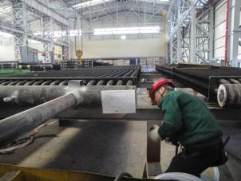
So this is when you require that your water tube boiler meet ASME Code requirements, or when you need your water tube boiler to be “S” stamped. For more detail about stamped boiler and requirements, review the Pressure Vessel Certification article. The regulation is similar to the one for the boiler. With the above explanation, your inspection and test plan (ITP) for the water tube boiler needs to meet the requirements of ASME Code Section I.
The water tube boiler is made from several components such as the HP Drum, finned Tubes, Headers, Tube Bundle, Stack, Damper, Silencer, Deaerator, etc. For more detailed information about water tube boiler shop inspection, review the following articles:
Third Party Inspection for Water Tube Boiler
Inspection and Test Plan for Water Tube Boiler
What is the Fire Tube Boiler Inspection Requirements in the manufacturing Shop?
The construction code for the fire tube boiler is ASME Code Section I, and it covers the minimum requirements for design, materials, fabrication, inspection, testing, and preparation for initial delivery.
For more detailed information about fire tube boiler shop inspection, review the following articles:
Third Party Inspection for Fire Tube Boiler
Inspection and Test Plan for Fire Tube Boiler
What is the In-Service Inspection Requirements for the Water Tube Boiler Inspection?
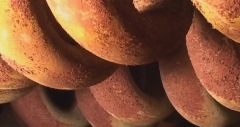
The In-Service Inspection code for your water tube boiler is ASME Section VII.
The inspection regulation is different from one location to another location by regulated jurisdiction.
In some states, the inspection by an authorized inspector of the insurance company is mandatory.
Generally, the states that have mandated “S” stamp for manufactured boilers, have also mandated in-service inspection by authorized inspection agencies.
The API also has a recommendation practice, API RP 573, for the inspection of fired boilers and heaters. Most of these practices and recommendations are similar to the ASME Code Section VII Recommended Guidelines for Care of Power Boilers.
During inspection and probable repair, other codes and recommendation practices might be used. Some of these are API RP 577, API RP 571 and ASME Code Section IX.
Please note that your water tube boiler is “S” stamped and you need to do repair, you have to use a Repair Organization holding an “R” Stamp from the National Board Inspection Code.
What are the Important Points in the Water Tube Boiler Inspection During shutdown?
Water Tube boiler inspections are categorized as follows:
Inspection of Internal Sections
- Inspection of refractories in the floor, walls and roofs of economizer, generation and superheater sections
- Inspection of refractories in man-ways, inspection and explosion doors
- Inspection of explosion and inspection doors for corrosion, warpage, and assurance for proper sealing contact and performance
- Inspection of refractories steel supports, beams and hangers

Inspection of Tubes
- Supervision and inspection of tubes outside cleaning process such as walnut hulls or dry ice blasting or washing with water
- Thickness measurement of tubes and headers
- Tube hangers inspection in economizer, generation and superheater section
- Inspection of tubes in economizer, generation and superheater for bowing, sagging, oxidation, splitting, external corrosion and deposit, leaking roll and bulging.
- Inspection of fin tubes for mechanical damage, distortion and corrosion
- Inspection of skin thermocouple weld joint in superheater section
- Inspection of tubes weld joints
- Replication test on superheater tubes (if necessary)
- Sampling of a tube in superheater for sectioning and corrosion analysis
- Inspection of tubes replacements
- Supervision of tubes hydrostatic testing
Inspection of Burners
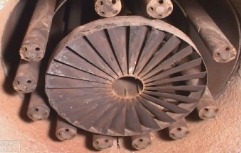
- Inspection of refractories around the burners
- Burner belonging components inspection such as burner tile, burner impeller, air register and damper
- Thickness measurement on fuel gas and fuel oil piping systems
- Inspection of air test process on the flexible hoses for fuel gas system
Inspection of Soot Blowers
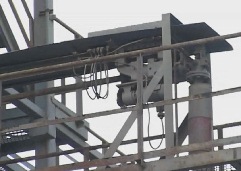
- Inspection of blowing tube for deformation and breaking
- Inspection of supports and their welding joints
- Inspection of blower tubes replacement (if necessary)
Inspection of Boiler External Parts
- Inspection of paint and insulation
- Inspection external surface for bulging and mechanical damage
- Inspection of expansion joints in the ducts for any warpage, tearing and burning
- Inspection of thermowells for erosion and cracking
- Inspection of gasket seating area
- Inspection for performance of explosion and inspection doors (proper opening and closing)
Inspection of Stack

- Thickness measurement in different locations
- Inspection of thermowells for cracking and burning
- Inspection of refractories
- Inspection of concrete foundation and anchor bolts
- Inspection of earthing system
- Inspection of guillotine frame and valves for corrosion and performance
- Inspection of paint surface
- Inspection of end nozzles
Inspection of Steam Drum
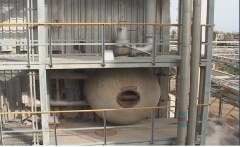
- Inspection and supervision of cleaning process
- Inspection of thermowells for corrosion, erosion and cracking
- Inspection of nozzles, manway weld joints for corrosion and cracking
- Inspection of internal surface for fouling, discolorations and cracking
- Inspection of longitudinal and circumferential weld joints
- Inspection of demister pads for corrosion, cracking and deformation
- Inspection of internal ladder and supports for corrosion and deformation
- Internal inspection of tubes by borescope
- Inspection of chemical injection and blowdown holes
- Inspection of gasket seating area for corrosion and erosion
- Inspection of reinforcement plate and welding joints
- Inspection of supporting plate and structure
- Inspection of small bore connections for corrosion and mechanical damage
Inspection of Silencer
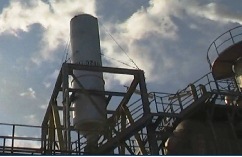
- Inspection of cleaning process
- Inspection of ceramic blankets and perforated plates
- Inspection of weld joints
- Inspection of silencer heads and components
Related Articles
Pressure Vessel Inspection, Heat Exchanger Inspection, Above Ground Storage Tank Inspection, Piping Inspection, Valve Inspection, Heater Inspections
Free newsletter!
Sign up to receive my monthly newsletter covering all the latest courses and updates.




New! Comments
Have your say about what you just read! Leave me a comment in the box below.